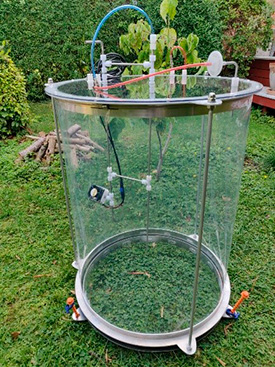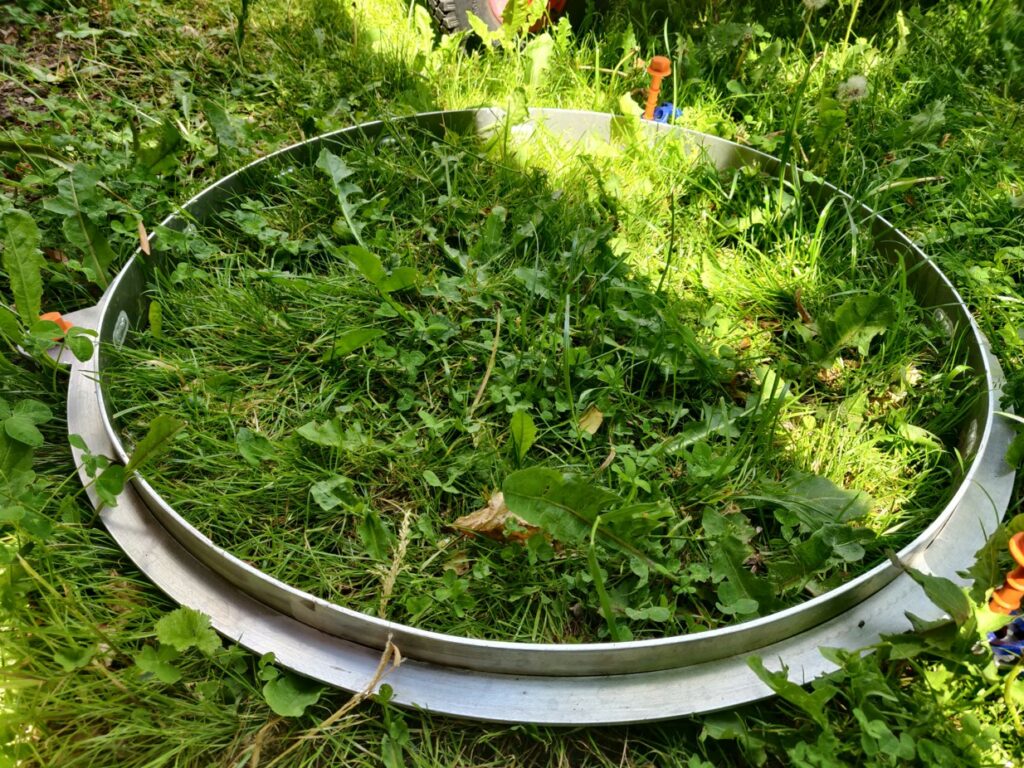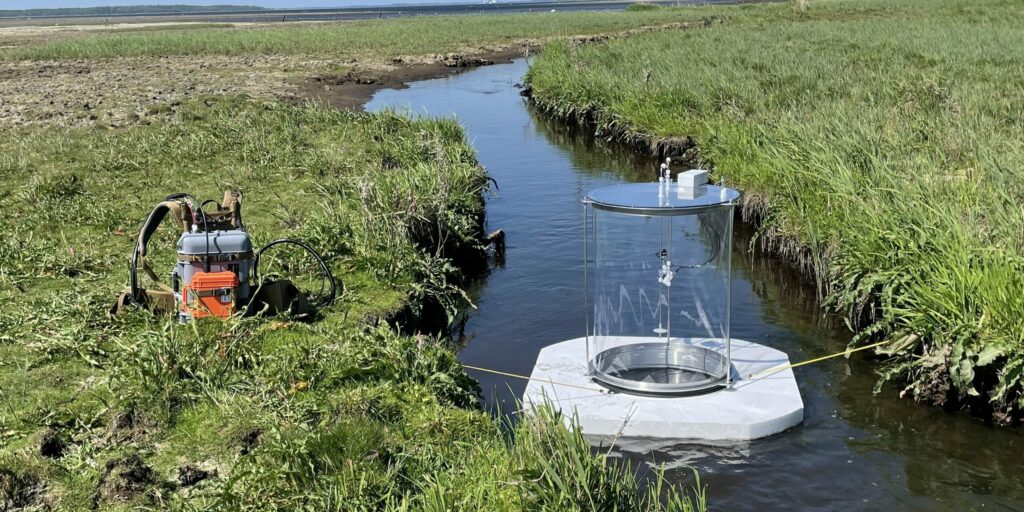In the design of the manual ECOFlux chamber we have used the same form factor as the automated ECOFlux chamber (diameter of 630 mm and a hight up to 800 mm). This makes it possible to combine the chambers easily if the scientific setup or project economy can benefit from it and get comparable results.
As shown in picture 2 to the right, the chamber comes preinstalled with a fan and tubings for a closed system design, which minimizes the risk of affecting the differential pressure, and thereby driving forces for gas emission.
Furthermore, the foil and lid in the chamber is made of transparent FEP (Fluorinated ethylene propylene) which has many of the same properties as teflon but is also very transparent to sunlight to minimize influencing photosynthesis. We also supply a coer if the user wants to “turn of” photosynthesis. As the chamber can be transparent as well as darkened, both Net Ecosystem Exchange (NEE) and Ecosystem Respiration (ER) can be measured directly and Gross Ecosystem Photosynthesis (GEP) can be estimated by their difference (GEP = NEE – ER), thus producing direct data of the processes behind NEE. The chamber covers a ground area of 3,100 cm2 and has a volume of 220 L (at standard height of 80 cm) and therefore is big enough to include plants communities in many natural low-stature ecosystem types as well as many agricultural crops.


We have designed the manual chamber with a fixed collar. This ensures a tight connection to the soil, measurements in the exact same spot over time and reduction of costs as the same chamber can be applied for multible collars. A typical setup for application of manual chambers includes:
- Manual ECOFlux chamber.
- Collars.
- Analyzer with pump (e.g. the ECOFlux CO2 analyser).
- Optional auxiliary sensors like PAR, Chamber temperature or soil humidity/temperature.
- Optional Datalogger for manual chambers combining all data from the analyzer and auxiliary sensors.
- Handheld rugged tablet for wireless contiuously wireless datatransfer
When measuring ammonia emission, it is also worth considering the bulk analyzer based on PID sensor technology. It is a very sensitive sensor, and as ammonia e.g., in crop systems often (by far) is the component with the highest concentration, the bias from other VOC’s measured with the PID-sensor is neglectable. If this is relevant for your project, applying the bulk analyzer can give you large savings compared to more sophisticated and gas specific analyzers for ammonia.
Setup and application of the manual chamber on dry land is shown in this short instructive movie
And application of the manual chambers on in a freshwater stream can be seen here:
Our experts are ready to help you to get the right setup for your project.


